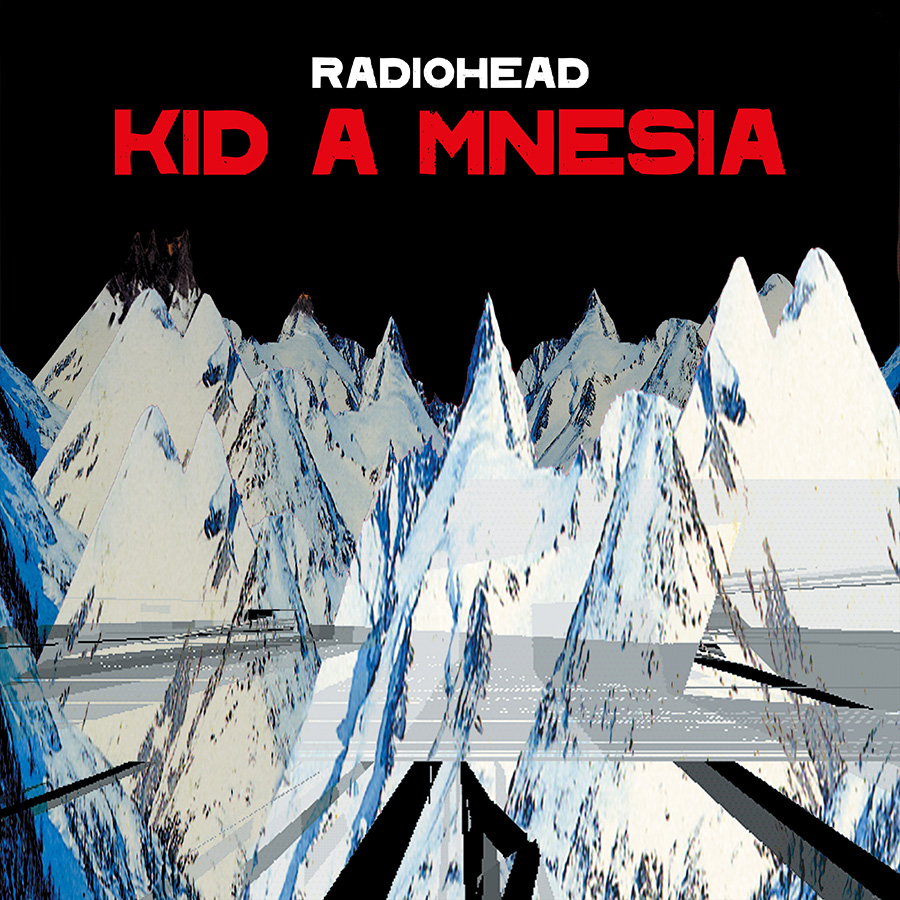
Radiohead’s Kid A Mnesia is a compendium of two of the band’s most important albums, Kid A and Amnesiac, both of which were released some 20 years ago as a follow up to 1997’s massively successful OK Computer. After a seemingly endless, often-tense tour in support of that album, Radiohead was physically, emotionally, and musically depleted. The band needed to refresh itself and chose to do so by ditching the guitar-heavy motif of OK Computer and going all in on keyboard-focused musical experimentation.
Those sessions produced two full albums’ worth of material. Yet Radiohead decided not to release a double album. Instead, they split the tracks over two albums, which they released eight months apart. Both (although more so Kid A) were hailed as masterpieces that pointed the way to a new direction in rock.
Radiohead has apparently changed its mind about multi-album sets, because this year they packaged together not only Kid A and Amnesiac but a third album of bonus material as well. The triple-album set is called Kid A Mnesia. Finally, we can hear just how seamlessly the original two albums elide, one into the other.
For those unfamiliar with this music, let me first say that it can barely be considered rock. Few tracks have traditional verse/chorus structures, although a couple (e.g., “Optimistic,” with its killer hook) were included just to show that could still do that. On the lyrics side of the equation, there aren’t many narratives. Instead, we get jarring, bizarre imagery such as “Yesterday I woke up/Sucking a lemon,”—a line, ironically, from “Everything in its Right Place.”
Nor are there many standard rock chords. Instead of stock majors and minors, we get lots of sevenths and ninths. Sometimes, these are played off against “normal” chords for effect. Listen, for example, to “Morning Bell,” where the uncharacteristically-sunny chords behind Thom Yorke’s “Release me” line contrast sharply with the more typically-dystopian chords that undergird verses like “Cut the kids in half.” (The song is about a divorce.)
“Pyramid Song” is the collection’s most experimental song, and arguably its best. The track supplants rock’s sacred 4/4 rhythm with a lattice of complex, ever-shifting time signatures. Consequently, the main theme, introduced on an acoustic piano, initially sounds tentative, sloppy even.
But as more parts join in, it becomes clear that the rhythms aren’t tentative, nor is the playing slipshod. The theme sounds off-kilter at first because the rhythms are highly unusual for rock. Yet when the drums come in, those rhythms start to make sense. By the time the full orchestra arrives, your notion of what’s strange and what’s normal has evolved; the rhythms now seem perfectly natural. Meanwhile, another evolution is taking place. From its simple beginning, “Pyramid Song” builds to a tense grandeur that would have been impossible to reach within rock’s standard strictures.
Obviously, Radiohead wasn’t aiming for another OK Computer-style hit, yet both albums were immediate hits. How could that be? My guess is it comes down to the music’s sheer beauty. For all its envelope stretching, Radiohead seemed incapable of abandoning gorgeous melodies.
There is mixed news on the sonics front. In a major disappointment, Radiohead didn’t take this opportunity to remaster the music. Nor did the band bother to release higher than CD-resolution digital options. Unsurprisingly, the new and old CDs, downloads, and streams all sound identical.
Another disappointment: the sound itself isn’t great. Digital versions, especially, suffer from an upper octave so truncated, everything sounds muted. Dynamics and bass are subdued as well.
The news is much better on the vinyl front. The original albums are available in 10” vinyl, and these blow away the digital versions. The upper end regains extension, and bass that you didn’t even know was missing comes to the fore. The new release is available in several triple-LP sets: domestic, imported, and red vinyl. Fortunately, they all sound much the same as the original LPs.
This leads to the question of whether you should buy Kid A Mnesia. The litmus test is simple: If you don’t already have both Kid A and Amnesiac as LPs, then you should definitely pick up the vinyl version of the new album. Otherwise, the question comes down to whether the bonus album has any merit. For Radiohead diehards, it does. I personally wouldn’t want to be without the “True Love Waits” version of “Pulk/Pull” or the country-tinged “Follow Me Around.” The disc closes with “How to Disappear Into Strings,” which is simply the string arrangement—isolated from everything else—of “How to Disappear Completely.” Far from a throwaway, the track makes evident that this material’s beauty isn’t limited to the melodies; it’s layered and goes deep.

By Alan Taffel
I can thank my parents for introducing me to both good music and good sound at an early age. Their extensive classical music collection, played through an enviable system, continually filled our house. When I was two, my parents gave me one of those all-in-one changers, which I played to death.
More articles from this editorRead Next From Music
See all
Music for 18 Musicians
- Apr 23, 2024

Schumann: Piano Quartet & Quintet
- Apr 16, 2024

Mendelssohn: Symphony No. 4 (1833 & 1834 versions)
- Apr 09, 2024

The Resonance Between
- Apr 02, 2024


















